Live Export: Following the Effluent Trail
The stench emanating from livestock carriers is legendary amongst seafarers. Some joke that they can be smelt before they appear on the ship’s radar. Images of animals covered in excrement, such as the one above, indicate why this might be so. They have been widely circulated by animal welfare groups, but are they really an accurate portrayal of conditions on board? And what risks do these vessels pose for marine pollution, animal welfare, crew safety and public health?
Carried by the oldest saltwater fleet, about 115 vessels in total, many millions of animals have been exported around the world by sea. The number of cattle exported live from Australia alone each year has varied between 620,000 and 1,310,000 for the last 10 years. The cattle are shipped to markets in Asia, the Middle East, Europe and Russia.
Using the table below, and assuming one million head of cattle a year, 20 kilograms (44 pounds) of excrement per head per day, an average voyage time of 10 days and vessel loading and unloading times of five days, something in the order of 300,000 tons of excrement is pumped into the sea during these voyages each year. A similar calculation for sheep, voyaging more typically for 20 days, would add a further 85,000 tons.
.jpg)
Source: Landline Consulting, 2003
The excrement has a high water content and is considered benign. It is treated like sewage under Marpol Annex IV and doesn’t need to be treated before dumping far from shore.
Some masters like excrement washwater to be released at night, when it won’t be captured on satellite images, says Dr Lynn Simpson, an Australian veterinarian who has made 57 live export voyages ranging from around 10 to 30 days’ duration. In her experience, masters take a very cautious approach to Marpol Annex IV regulations which, simply put, state that the excrement can be discharged at a distance of more than 12 nautical miles from the nearest land at a moderate rate when the ship is en route and proceeding at not less than four knots.
.jpg)
Source: Landline Consulting, 2003
On voyages of more than 10 days, ships are washed down every three to five days. On big ships, this operation can take three days to complete. There are no shore-based facilities to accept livestock excrement, so the only excrement on board that reaches shore is that stuck to the animals themselves.
Simpson was a well-respected live export veterinarian when she was hired by the Australian government to submit a report on the trade in 2012 after media reports of live export cruelty. She believes that the report was generally bland, except in one respect: It was full of pictures – some showing animals covered in excrement.
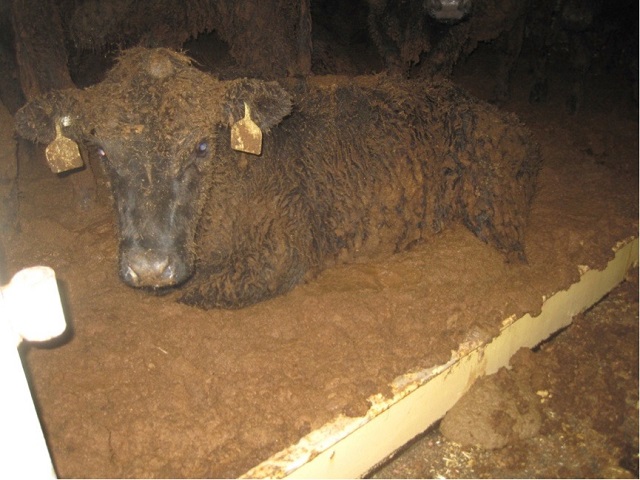 Picture credit: Dr Lynn Simpson
Picture credit: Dr Lynn Simpson
The report was made public by the government, and Simpson lost her job after Australia’s export industry said they could not work with her after seeing it.
“Industry in Australia tends to only show PR-approved images of short-haired cattle that are freshly loaded. For example, watch the Mighty Ships episode of MV Becrux, which was renamed MV Ocean Drover, possibly after a large loss of livestock on board in 2003,” says Simpson.
“Mighty Ships only shows a three day voyage which appears to not be fully loaded. This time frame is short. The animals haven’t had time to build up excrement coverage on the ground, lie in it, have it traipsed across each other by other cattle. They also have been unlikely to have had a wash, likely due to the short coats of the Brahman the industry typically display to the public. This shorter coat attracts less fecal coverage and is easier for the animals to self-clean by licking it off.
“Whilst cleaning removes the bulk of excrement from the cattle and the decks, it also leaves behind some contamination and the wet decks rarely dry out properly for the remainder of the voyage. For long haul voyages, any image of cattle covered in excrement is not atypical.”
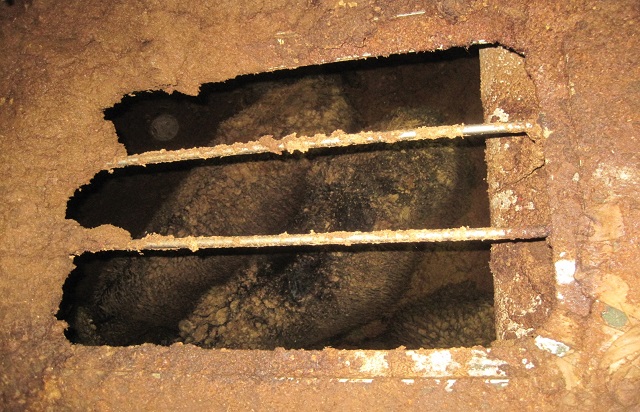 Picture credit: Dr Lynn Simpson
Picture credit: Dr Lynn Simpson
The Australian industry group Liveship disagrees. Chairman Roger Timms says: “Whilst the pictures mentioned clearly demonstrate unsatisfactory outcomes most likely brought about by poor planning for pen cleaning and deck washing procedures on board some ships carrying cattle in the past, these should be viewed as atypical when compared to the outcomes now being achieved through contemporary shipboard practices that comply fully with current Australian Standards for the Export of Livestock (ASEL) requirements.”
Simpson sailed on 57 loaded livestock voyages over 11 years from 1999 to 2010. Veterinarians other than her would have covered some 72 long-haul voyages for each year in question, says Liveship. Therefore, the pictures cannot necessarily be considered as representative over this 11-year period.
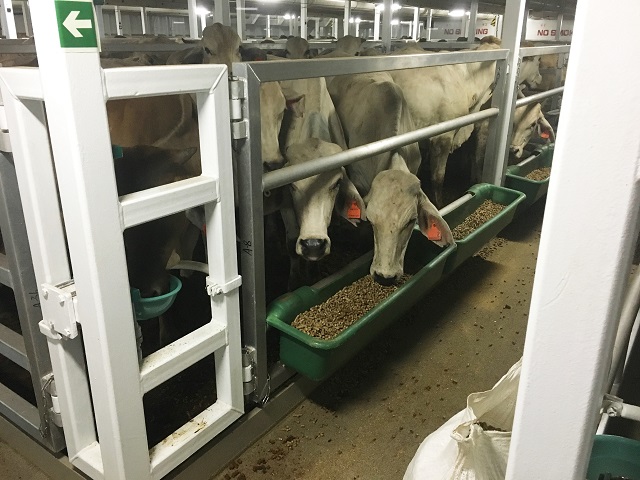 Cattle on a short-haul voyage on the Greyman Express. Credit: Kelly Ennis
Cattle on a short-haul voyage on the Greyman Express. Credit: Kelly Ennis
Despite industry assurances, welfare groups still believe there is an issue with livestock arriving at their destination covered in excrement. A spokesperson for Israel Against Live Shipments says cattle continue to arrive from Australia, typically a three-week journey by sea, covered in excrement. This occurs on a regular basis, and is not atypical, says the organization.
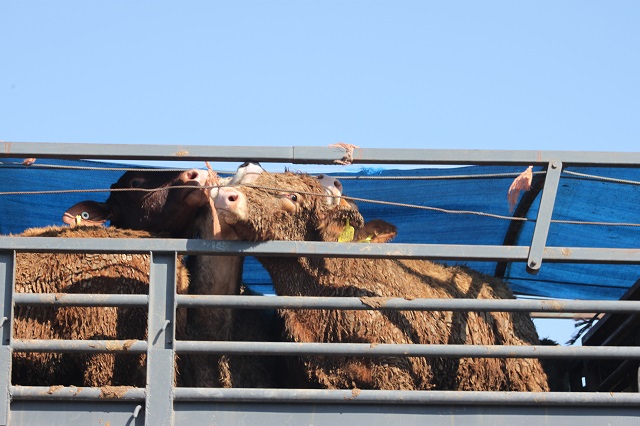
Animals Seek Out Excrement
Australia sets the highest animal welfare standards for animal welfare in the live export trade globally through Marine Order 43 and ASEL. Washdown rates are not mandated in these regulations, or in Marpol Annex IV, but ASEL specifies that the washing down of decks and disposal of feces and litter must be carried out with regard to the health and welfare of the livestock. This is at the discretion of the accredited veterinarian or an accredited stockperson on board.
Sheep and goats produce a dry fecal pellet compared with sloppy cattle feces, reducing the need for washdown of sheep and goat pens. Even for long-haul voyages, it is often only done on the return ballast voyage before more animals are loaded. The World Organization for Animal Health states that during sea transport suitable bedding, such as straw or sawdust, should be added to vessel floors to assist absorption of urine and feces, provide better footing for animals and protect animals from hard or rough flooring surfaces and adverse weather conditions.
Live export consultant and veterinarian Dr Peter Arnold says that the routine on most modern ships is that on about day three to five of the voyage, some or all of the decks are hosed clean of deep litter, consisting of hay, feed pellets, absorbed urine and feces.
Arnold has accompanied 20 voyages, and he says that livestock are not concerned by the material. “The animals seem to seek it out, lay in it and cover themselves willingly in this mess. Washing is very messy at the start but ends with a clean deck and animals. Often the mess is transferred to below or other decks. During this washing process, sternally recumbent animals can often be seen chewing their cud whilst the sloppy mess drains on them from the upper deck cleaning,” says Arnold.
“The fecal mess will often dry on the animals giving them a permanent fecal crust. It might not be a good look to humans, but the animals aren’t the least concerned,” he says.
 Picture credit: Dr Peter Arnold
Picture credit: Dr Peter Arnold
During the cleaning of the decks, members of the crew are usually fitted with wet weather gear and appropriate boots. High-pressure sea water hoses are used, and the mess ultimately washed overboard. Marpol Annex IV requires that it is first stored in tanks for later discharge.
“The crews are equipped with acceptable protective clothing and equipment and always have been,” says Arnold. “It’s no different to working with any other possibly hazardous cargo.”
Health Risks
Relatively harmless conditions that people can pick up from animals are Q fever, scabby mouth and ring worm. Septicemia from common fecal bacteria is also a potential hazard.
Arnold says that there is only one deadly disease, anthrax, which can be transmitted by animals including from Australia. Transmission is highly unlikely because the disease is rare, he says.
All animals excrete bacteria, protozoa and virus, and the Australian government body Agriculture Victoria describes some of the diseases caused by bacteria that can be transmitted to people from cattle and sheep, including anthrax. Almost all cases of human anthrax can be directly linked to contact with infected animals, particularly cattle, or indirectly through contact with heavily contaminated soil, says Agriculture Victoria. The most at risk people are those working with carcasses, especially animals that died suddenly. Occupational exposure can also occur via animal products such as contaminated wool or hides.
Brucellosis and tuberculosis are also listed as serious diseases. They have been eradicated from Australia, although they are still present in other countries.
Escherichia coli is part of the normal gut flora of cattle and sheep. They carry it without it causing disease. However, when humans are infected, the toxins that the bacteria produce can cause serious illness, states Agriculture Victoria. This can range from diarrhea to kidney failure, and fatal cases have been reported. The practice of personal hygiene, particularly after contact with animal feces, is critical, as very few organisms are required to infect a human.
Sterilizing Before Discharge
Limits on bacteria in the discharge of ballast water have been defined in the D-2 standard of the IMO Ballast Water Management Convention. The standard sets restrictions on Escherichia coli, cholera and intestinal Enterococci on the assumption that their sterilization will be indicative of the sterilization of all bacteria.
However, for livestock waste, Marpol Annex IV considers the impact of these organisms in the ocean to be extremely brief owing to dilution and the combined sterilization effects of seawater and sunlight. Time for 90 percent mortality of Escherichia coli in the sea varies from four hours to four days depending on water temperature; mortality is faster in warmer conditions.
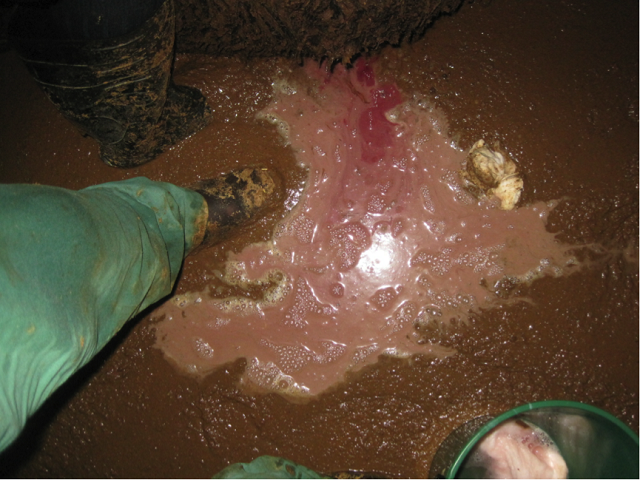 Pus. Credit: Dr Lynn Simpson
Pus. Credit: Dr Lynn Simpson
Marpol Annex IV notes the most common causes of livestock mortality stem from enteritis, refusal to feed, injury, exhaustion or illness not evident prior to loading.
Australian veterinarians are required to treat sick and injured animals, and so excrement and carcasses can contain traces of treatment drugs. The residue from one drug commonly used, Oxytetracycline, can be present in the animal’s body for 90 days, and Australia’s meat export industry must observe and declare a withholding period of 90 days between medicating an animal with this drug and human consumption. More typically though, residues from other drugs dissipate in less than two weeks.
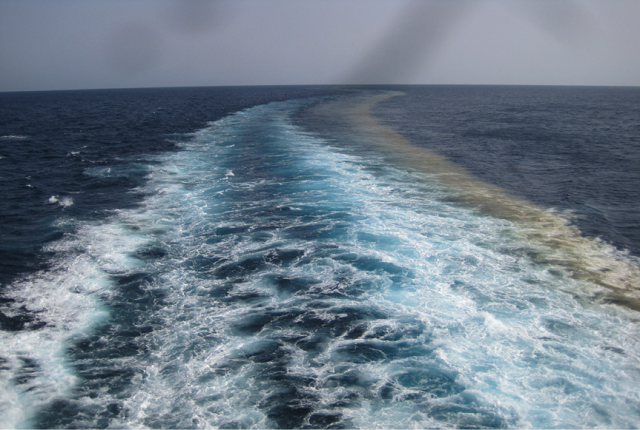 Effluent discharge from a livestock carrier. Picture credit: Dr Lynn Simpson
Effluent discharge from a livestock carrier. Picture credit: Dr Lynn Simpson
Disposing of Carcasses
Carcasses are thrown overboard whole, in part, or after being mechanically processed in equipment such as a grinder. Based on death rates for 2015, Australian live export voyages would have resulted in approximately 12,500 sheep and 1,300 cattle carcasses being disposed of at sea last year.
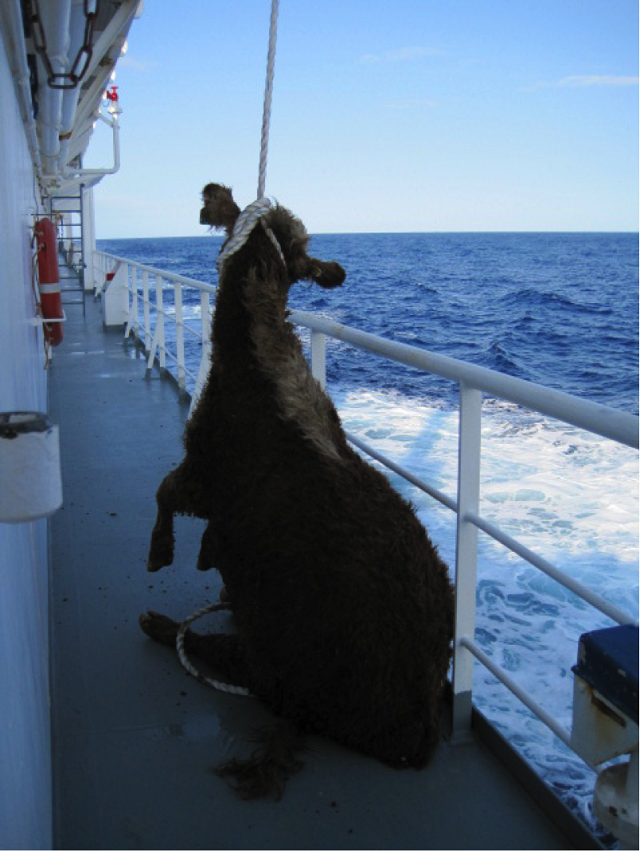 A crane can be used to get whole carcasses overboard. Credit: Dr Lynn Simpson
A crane can be used to get whole carcasses overboard. Credit: Dr Lynn Simpson
Marpol Annex IV sets out a range of rules regarding how and where carcasses can be disposed of at sea, as does Australian Marine Order 43. Generally, the master must ensure that no carcass is disposed of at sea within 100 nautical miles of the nearest land unless the carcass has been passed through a grinder or has been slit to the extent that the thoracic and abdominal cavities are opened.
According to Simpson, masters are generally not aware when crew throw carcasses overboard. “Operationally, cattle are generally cut into pieces for disposal, but that’s usually to facilitate getting the weight of them to the side so we can throw them over. If they are near the edge, we sometimes walk them to a gateway, shoot them, and roll the whole carcass into the sea.
“Unless post-mortems are conducted, the usual practice is to throw all dead sheep overboard entire. You can often watch them bobbing on the water’s surface in the ships wake as you steam on.”
Simpson says that whole, slit or part carcasses don’t sink straight away, and when they do, they can bloat and rise to the surface again. She cites a YouTube video of a tiger shark eating a dead cow as an illustration of how an animal, even with most internal organs missing, can float.
“We try to throw all deads and kill all animals we suspect may die before port as far away from land as possible. However, if you find any deads as you approach port, say, several hours out, they will usually be thrown overboard or hidden somewhere out of sight from officials, such as on the roof under a tarp.
“If an animal is decomposing rapidly from heat, it is usually disposed of as soon as possible, regardless of where we are as long as we are not in a port area.”
Not all livestock carriers have grinders. “They are like the old-style laundry chutes you see in old movies in hotels,” says Simpson. “Each deck has one hatch, and you throw the body in, hoping another doesn’t come flying past from above at the same time, making a mess. They often have intestines and bits of body pieces or entire animals hooked up, decomposing or draped over any parts that may protrude such as bolts, latches, etc.”
Sometimes grinders jam up, and a crew member has to get in. However, Simpson says: “There’s not enough money in the world to get me into one of those things.”
Carcasses can present another hazard to crew. Arnold says he has seen holds full of dead cattle due to fires or major ventilation breakdowns below decks. Crews may require gas masks and even oxygen to clear the rotting carcasses.
Marpol Confusion
Liveship says that Marpol Annex IV requirements are comprehensive, but can be confusing. However, masters’ and senior officers on board livestock ships surveyed and certified by the Australian Maritime Safety Authority to trade to and from Australia are clear on their obligations, as is their operational management ashore.

that matters most
Get the latest maritime news delivered to your inbox daily.
“The requirements are considered more than adequate for the disposal of non-persistent organic waste from the approximately 115 livestock ships currently estimated to be in service worldwide when compared with the potential pollution risks associated with residues from petroleum, chemicals and hazardous noxious liquid substances carried in the large number of ocean going merchant ships of other types,” states Liveship.
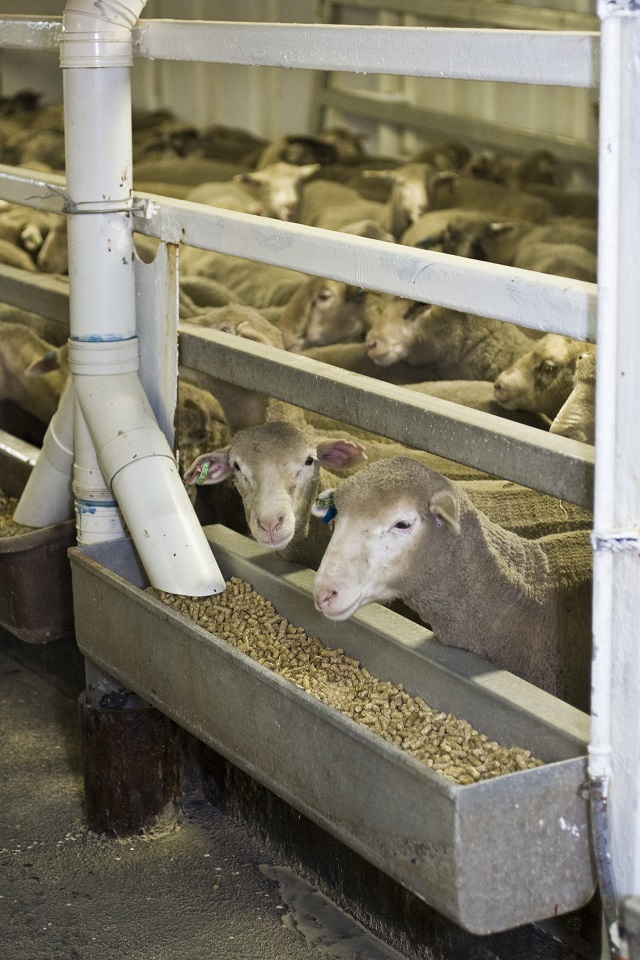 Credit: Liveship
Credit: Liveship
The opinions expressed herein are the author's and not necessarily those of The Maritime Executive.
